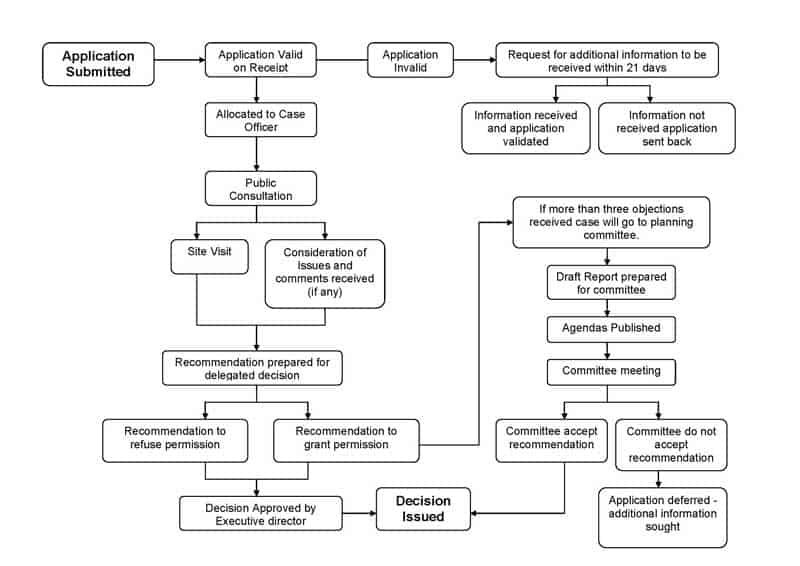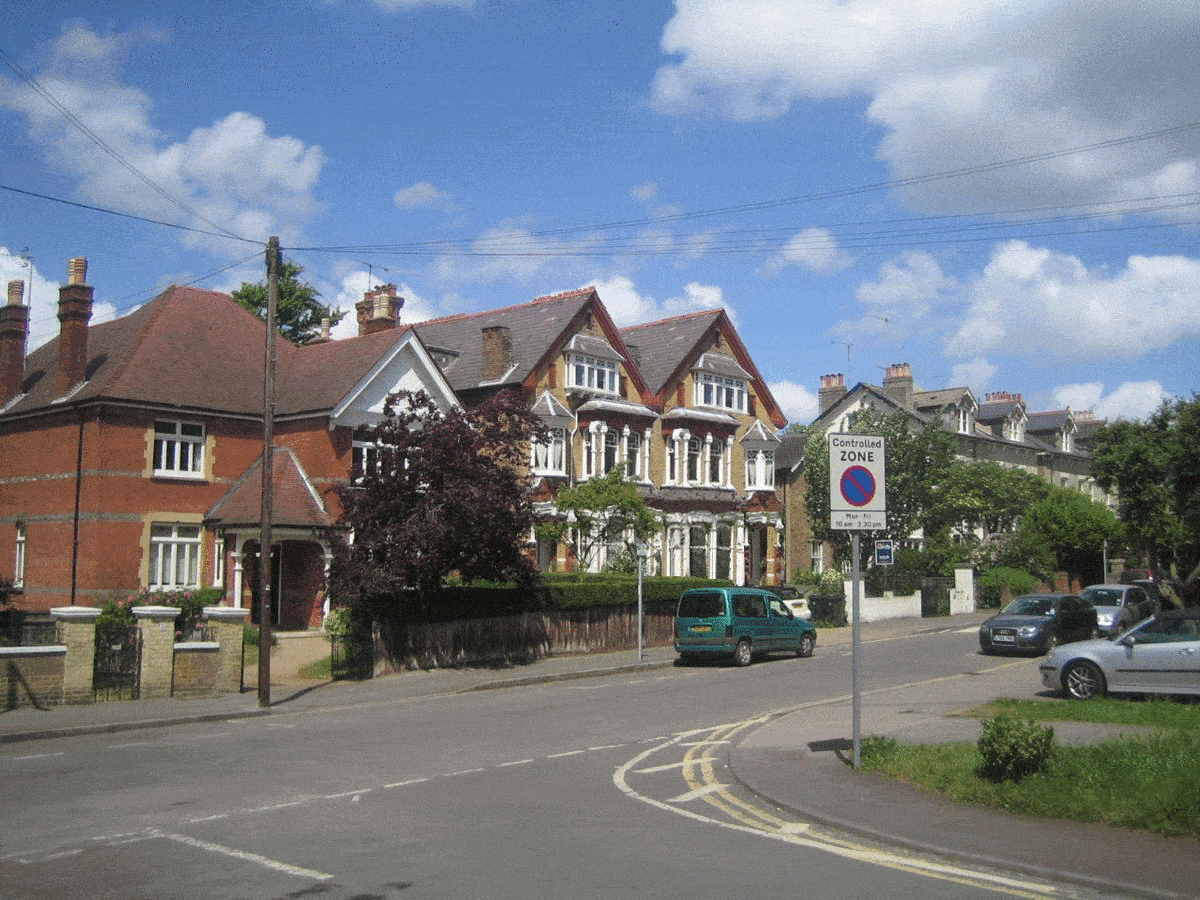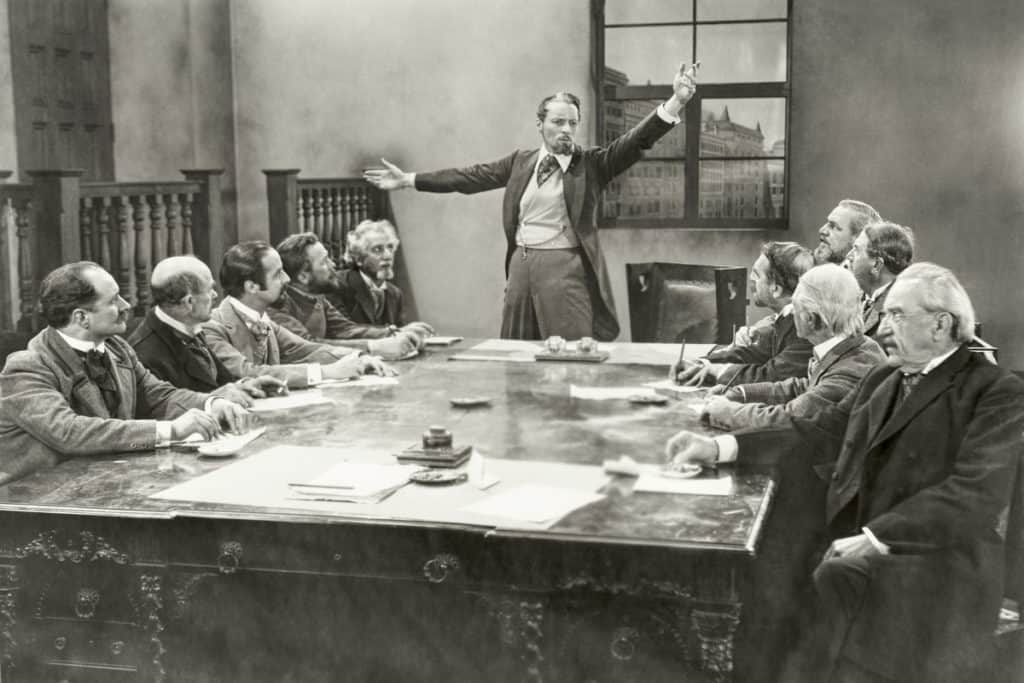BLOG
INTERESTING STUFF
THAT CAUGHT OUR EYE
What is the Process for Applying for Planning Permission?

Planning applications are lengthy, involved processes that can take anywhere from weeks to years to reach a conclusion.
In relatively simple developments where every stage progresses smoothly you could be able to start building work within a couple of months, but neighbour objections, listed status negotiations and appeals can stretch that date far out of reach.
Understanding the process, where you may be tripped up and how long each stage takes is essential to realistically assessing the risk of your application and the investment in time you will need to make.
 A flowchart of the planning process, produced by the RBKC.
A flowchart of the planning process, produced by the RBKC.
Pre-application
It’s recommended that you apply for pre-application before your final submission. This gives you the opportunity to meet a planning officer and test the waters with your proposals.
The planning officer will give a full break down of the regulations for your site, a checklist of required documents for your application and provide a general idea of the likelihood that you will be granted permission.
Pre-applications aren’t free and it can take from four to eight weeks to get a slot, but they dramatically reduce the risk of a failed first attempt, especially for more complex projects.
It’s also worth bearing in mind that planning applications are publicly viewable, while pre-applications are confidential. This makes them a valuable way of seeing how far you can push the boundaries without damaging public perception of your development.
This should also be the stage that you consult your neighbours to clear any of their concerns before submitting your final application.
Planning Application
Once you’re sure of the development you want to pursue, your architect will assemble the planning application and all necessary supporting documents and evidence. Hopefully, you have a relationship with your architect that has allowed you to fulfil your goals while still having a high chance of success.
The fee for the actual application is quite low. It’s the number of specialists required to produce all supporting documents that makes the planning process expensive, and depending on the area you’ll be needing to hire between five to ten or even more. Ensure your architect can verify the quality of each one: it takes just a single fudged document to undo the entire application.
Your architect may also have to create a range of visual materials such as 3D renders depending on the difficulty of the application. A convincing, photo-realistic render of your plans can often do more to win over hearts and minds than pages and pages of text.
 For Crescent Road, we presented photorealistic renders to a planning committee originally set against our clients. The house has since gone on to win awards.
For Crescent Road, we presented photorealistic renders to a planning committee originally set against our clients. The house has since gone on to win awards.
While it can be disheartening to see costs add up before a single brick is laid, it’s better to be thorough at this stage than risk having to go through the entire process again. If your architect is upfront about all costs and why they’re required, you should have no surprise dents to your budget.
Once all forms are filled out, double checked and bundled with the required documents, the application is sent to the local planning department. The planning officers will check all requirements are met and request any missing documents.
If your architect has good rapport and reputation with the local council, they may receive advice for minor changes that need to be made in order to give the application a better chance, saving the hassle and costs of appeals and resubmissions.
Your planning application is then publicised and will be considered by the planning officer within eight weeks.
Planning Committee
 This photo may or may not be of a planning committee, but it certainly represents how it feels for an architect to present before one.
This photo may or may not be of a planning committee, but it certainly represents how it feels for an architect to present before one.
If the number of public objections to your planning application go above the threshold for your area, the application will be automatically put forward to a Planning Committee.
Planning Committees provide the public with an opportunity to air their grievances while the architect can provide additional evidence to why their concerns are unfounded or not significant enough to deny development.
The result of a Planning Committee may be that the application is approved, but with certain conditions added to satisfy neighbour concerns. If you and your architect consider those conditions appropriate you can start development, if not, you can appeal to the Secretary of State to have them relaxed or removed.
Design Review Panel
In rare cases, the local council may feel the need to bring in a panel of experienced architects to provide their verdict on a development. This usually occurs for the most ambitious designs that the council does not feel sufficiently informed to assess, or when the local community or special interest groups object to a project.
The architect for your project will be asked to present their case to the Design Review Panel to justify their plans and their approach to the challenges of the design and development. The discussion is highly technical and every aspect will come under close scrutiny.
It’s essential that your architect is confident in explaining their work – the esteemed architects on a Design Review Panel will easily sniff out a novice.
Once the panel closes, the architects will advise the council on whether the development has sufficient grounds to be approved.
Planning Appeal
If you have received a formal letter of refusal or the planning department has failed to respond within the allotted time, you are entitled to use the appeals process.
Depending on the nature of your application, there are three possible methods of appeal:
- Written Representations
This involves submitting the application along with any supporting information to an independent inspector from the Planning Inspectorate. The local council will also submit their relevant documentation and grounds for refusal.The inspector will then conduct a site visit to provide an impartial verdict on each party’s claims based on the evidence provided and their own assessment. - Hearing
This is a meeting between your architect, the local authority and an independent inspector from the Planning Inspectorate to discuss the case in detail. The inspector will then deliver their verdict based upon the arguments made during the hearing. - Public Inquiry
Reserved for major applications and rarely required for residential development, public inquiries are expensive, time consuming legal proceedings where there is significant public feeling towards a development. Legal representation is likely required in addition to your architect.
Whatever process applies to your development, it’s essential that your architect has proven experience in being successful in planning application appeals. Any appeal requires an additional level of involvement and investment from your architect, and they need to be well prepared for the scrutiny that their work will come under.
Second Planning Attempt
Should your appeal fail, or if you felt there was no use appealing in the first place, the final option is to go back to the drawing board.
By this stage, you and your architect should be intimately aware of what changes have to be made in order for the application to be successful in a second attempt. Unfortunately, the more you have to change in the plans, the more specialists you will have to rehire to conduct tests on the new designs.
You may feel at this stage that the planning refusal was the fault of the architect rather than your brief. In this situation, it’s worth seeking second opinions from other architects on your original planning application and switching over should you be more confident in their ability.
At DGA, we’ve inherited many projects that failed their initial planning application. Often, it’s the quality and detail of the application and supporting documents that is at fault rather than the design, or the design may feature easily correctable flaws.
Hiring the wrong architect is often a painful waste of time and money, but by learning from your mistakes and staying optimistic about your goals your second attempt will put you back on track.
If you need trustworthy advice on the planning process, book a 45 minute zoom consultation with John here.
